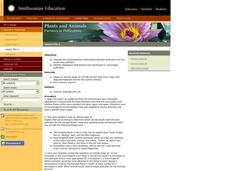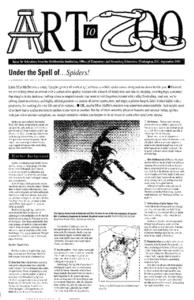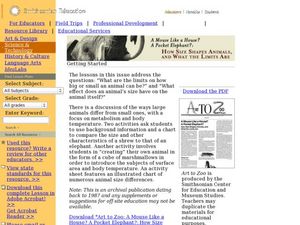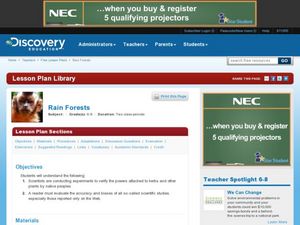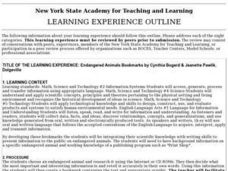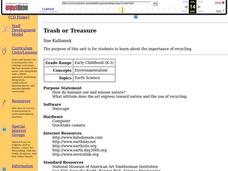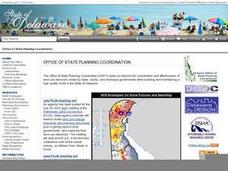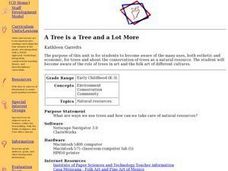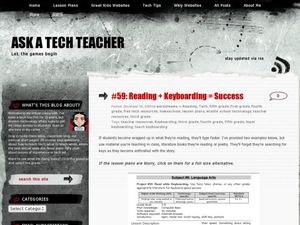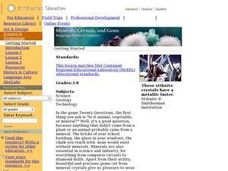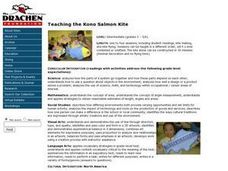Curated OER
Too Many Tamales
Students investigate Mexican holiday celebrations and compare them to American Christmas holidays. They conduct a Mexican Christmas Scavenger Hunt. The lesson uses a streaming video in order to engage students in the main objectives.
Curated OER
Immigration Unit
Third graders develop an appreciate for the various cultures that are present in their local community. Through reading and research, they explain how various culture came to live in their area. At the conclusion of the unit, 3rd...
Curated OER
A Vacation Expedition: Universal Design and Differentiated Instruction Lesson
Students plan a vacation to either a mountain, deep-sea location, rainforest or to the moon. In this vacation planning lesson, students research information about the location of their choice. They watch video clips on the SMARTBoard,...
Alabama Learning Exchange
The Solar System
Students explore the Solar System. In this cross-curriculum space instructional activity, students identify the planets, name them in order according to distance from the sun, and describe major characteristics of each planet. Students...
Curated OER
Plants and Animals: Partners in Pollination
Students describe the complementary relationships between pollinators and the plants they pollinate, identify adaptations that flowers have developed to "encourage" pollination, and create and draw their own "designer" flowers.
Alabama Learning Exchange
We Can Dig It!
Third graders understand the process by which fossils and rocks are excavated. In this fossil and rock lesson, 3rd graders explore the job of the paleontologist in a podcast.
Curated OER
Under the Spell of Spiders
Students examine spiders. In these spider lessons, students will view spider images and live spiders to determine physical characteristics, habits, and habitats. Students will examine fantasy and folklore about spiders to create and...
Curated OER
The Westward Movement
Students study the westward movement through examining stamps. In this westward movement lesson plan, students draw conclusions, determine cause and effect relationships and examine the westward movement of the United States by...
Curated OER
How Size Shapes Animals
Students investigate how size affects large and small animals differently. In this animal lesson plan, students determine how size affects different animals by constructing their own animal out of marshmallows. Once students create...
Curated OER
Lions and Tigers and Bears - Oh My!
Research animals and develop a non-fiction presentation. Students will complete research on a particular animal and determine the animal's characteristics as well as habitat before choosing a differentiated project to present using the...
Curated OER
Readings in Hudson River Natural History: Understanding Informational Text
After reading a series of informational articles regarding the Hudson River Estuary, the class will answer a series of comprehension questions. An answer key is provided but the articles and worksheets are not.
Curated OER
Surprise in a Suitcase
Students research an animal from Australia. They create a habitat (in the form of a diorama, poster, mobile, etc.) for their animal and write a coordinating paper. They present their animal and habitat to the rest of the class.
Curated OER
Rain Forests
Students watch a PowerPoint presentation about the layers of the rainforest. They create a paper rainforest in the classroom. They take notes from the presentation and write a paragraph to include in a layer book. They create a...
Curated OER
Endangered Animals Bookmarks
Learners conduct research on various endangered animals. They conduct Internet research, create a bookmark with information about their selected animal, and sell the bookmarks to raise money for an organization dedicated to endangered...
Curated OER
Trash or Treasure
Students explore the importance of recycling. Students are read "Can Kids Save the Earth", they are then guided in a recycling project. Students discuss Earth Day, and make poster to promote Earth Day.
Curated OER
An Encyclo-ME-dia for Every Child
Students create a digital scrapbook that shows information-text and pictures that are specific to each child. They make charts and graphs. They use digital cameras, scanners, software, to write captions, stories, poems, letters, and...
Curated OER
Properties of Matter
Third graders explore forms of matter through reading, hands-on science activities, and research using the Internet. Students create a booklet, directions given, that they title and decorate, to later serve as a review visualization...
Curated OER
"Where in the World is my School?"
Students learn new vocabulary and discuss what GPS is and does. They locate their school using the equipment.
Curated OER
A Tree is a Tree and a Lot More
Students listen as the teacher reads "The Giving Tree." they discuss all the things the tree gave the boy throughout his life. They discuss ways they benefit from trees. This studying culminates with a tree walk and planting a tree in a...
Curated OER
Reading + Keyboarding= Success
Learners practice their keyboarding skills. In this typing lesson plan, students use interesting stories to practice their skills. They practice throughout the semester and then monitor their improvement.
Curated OER
Dino Hunt
Students use the Internet to gather information about dinosaurs. They practice navagating through the different websites. They also practice listening to directions and also explore how to fill out a KWL chart.
Curated OER
Minerals, Crystals, and Gems
Students discover the relationships between minerals, crystals and gems. They bring in rocks that they find at home, in the schoolyard, etc. and examine them and attempt to identify them. They set up a classroom exhibit that includes all...
Curated OER
Teaching the Kono Salmon Kite
Students complete several student readings involving kite making and kite flying. They analyze how the parts of a system go together and how these parts depend on each other. They comprehend how different environments both provide...
Curated OER
Plants and Animals: Partners in Pollination
Students identify the plant parts and bee structures that are involved in pollination. They simulate pollination in a group activity and process the information.




